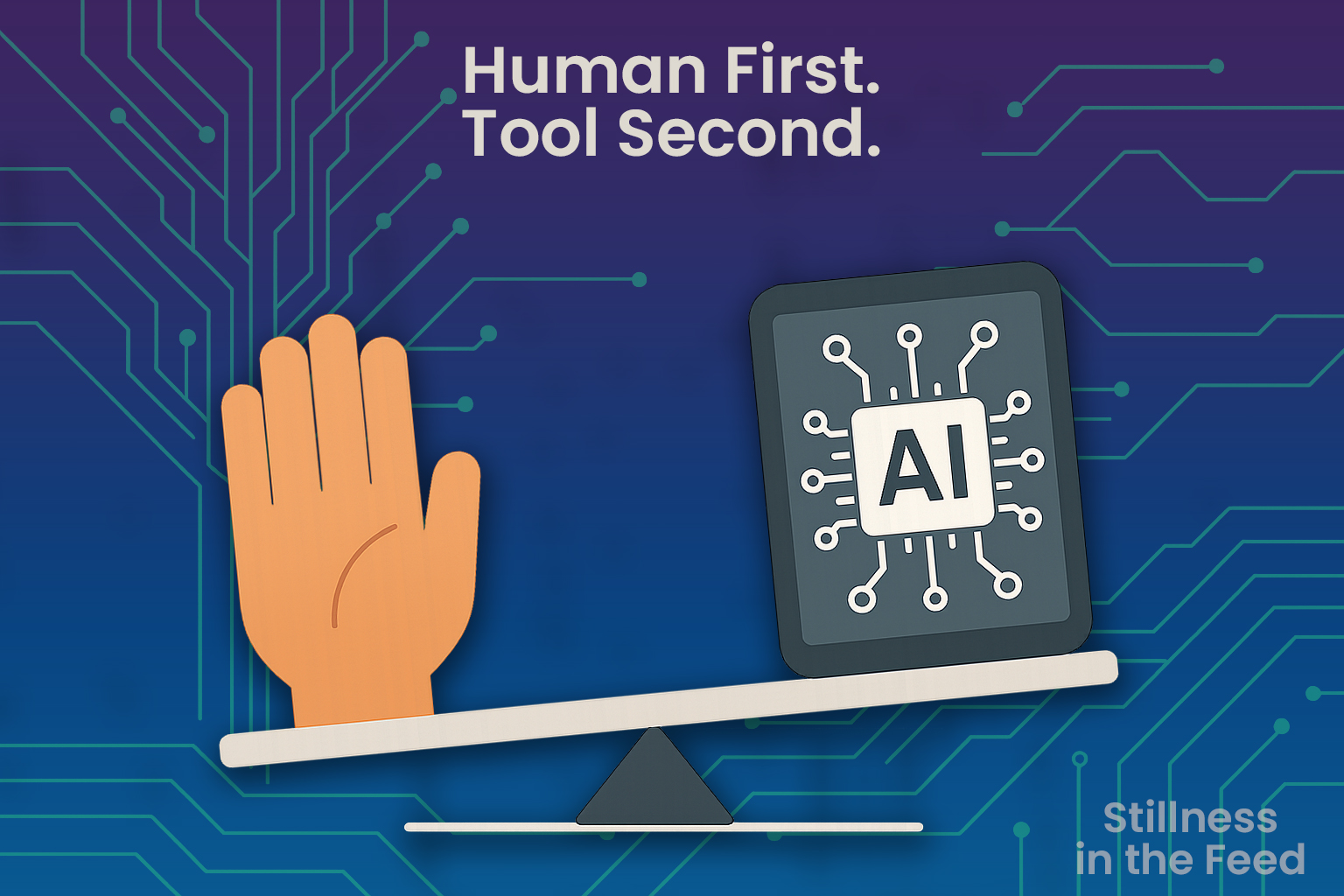Most people ask what AI can do.
I start by asking what I want to do—and where I want support.
When the latest wave of AI hype hit, I felt the familiar startup pressure: act fast, integrate tools, automate everything. The feed was full of “top 10 prompts” and “AI will replace you” takes. It was loud, it’s still loud.
But I’ve learned to listen for something quieter: intention.
That voice—the one under the noise—kept asking me: What is this for? What do I want to protect? What kind of thinker, builder, and leader do I want to be in an AI-powered world?
That’s how I landed on my personal rule:
Human first. Tool second.
What That Means to Me
For me, AI isn’t about replacing my work. It’s about creating more space to do it with clarity.
Here’s how I use it in a way that feels aligned:
- Clearing Fog, Not Creating Noise
I sometimes use AI to help shape the structure of a messy thought. It’s like having a whiteboard that talks back. But the voice? That’s mine. Always. - Accelerating Research, Not Avoiding Insight
I’ll use AI to pull together raw data or offer a jumping-off point. But discernment, synthesis, point of view—that’s human work. That’s the work I value most. - Reducing Admin, Preserving Energy
If a tool helps me stay present in the work that matters—writing, thinking, listening—I’ll use it. But only if it respects the energy I’m trying to protect.
Where I Don’t Use It
There are boundaries I keep, because certain work requires emotional fidelity:
- Anything That Speaks for Me
If it’s a conversation, a reflection, a moment of connection—I don’t outsource it. - Values and Vision
These are not prompts I plug into a model. They come from lived experience, time in tension, and the slow work of reflection. - Relationship Work
Every person I work with deserves my actual presence. Not a polished sentence or synthetic warmth.
Less Output, More Oxygen
To me, AI can be a powerful ally—but only if it gives me more space to breathe.
I want tools that make room for thoughtfulness. Not ones that automate my way into numbness. Not ones that confuse motion with meaning.
Used well, AI protects my clarity.
Used poorly, it just adds to the feed.
Mirror Moment
How do your tools shape your voice?
Are you using AI to deepen your thinking—or just to speed it up?
Thanks for reading.
More signal, less noise.
— Brandon


